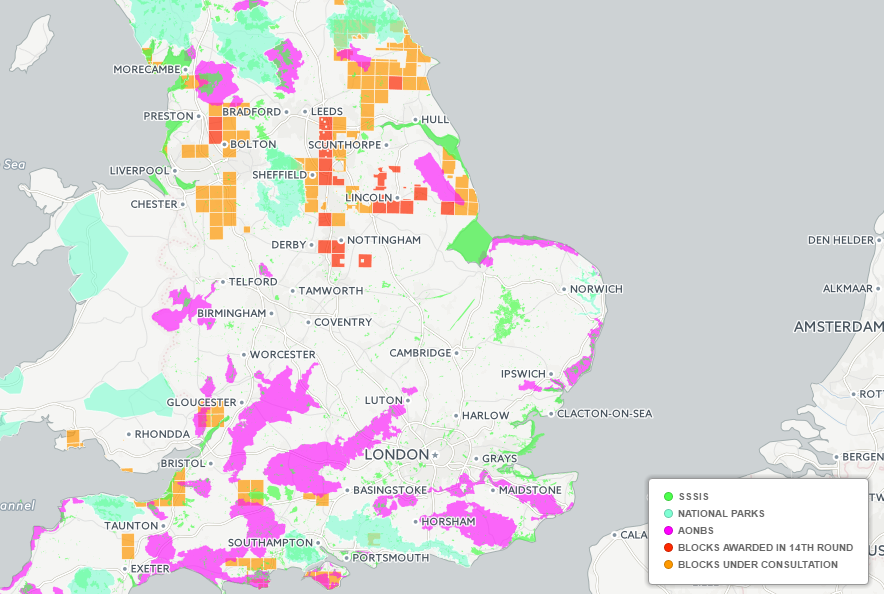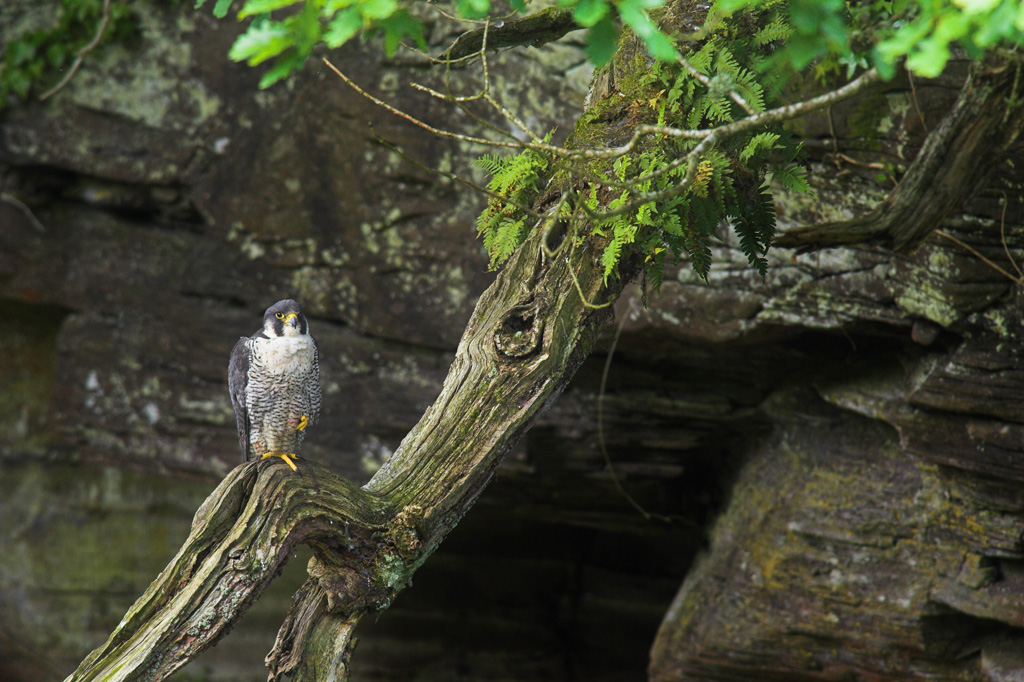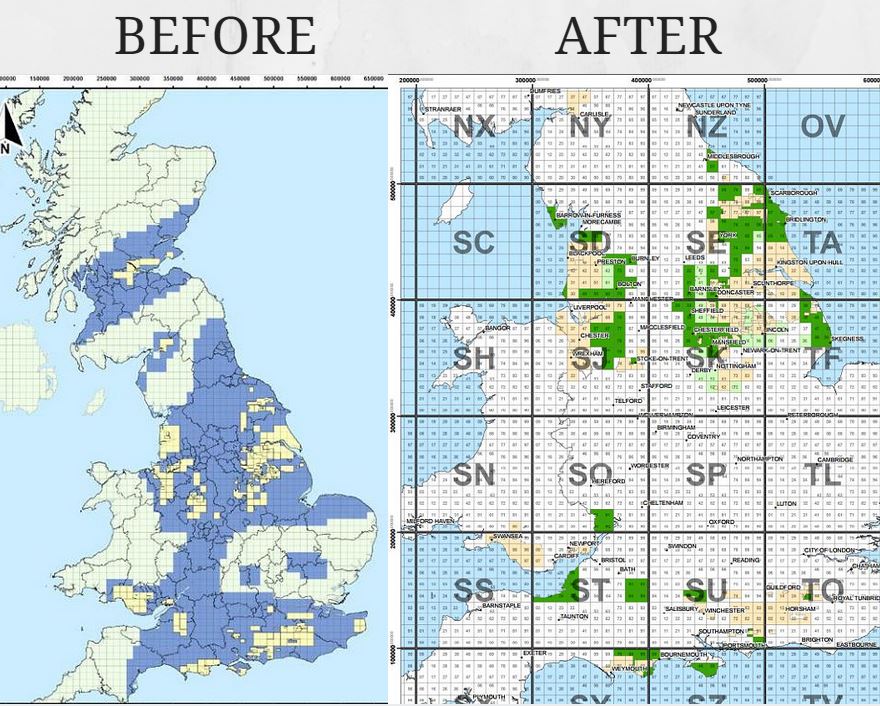Dozens of Sites of Special Scientific Interest in blocks offered for fracking

Tens of Sites of Special Scientific Interest (SSSIs) fall within the oil and gas exploration blocks in England just announced by the UK government.
The announcement details the blocks that the government’s Oil and Gas Authority (OGA) is offering for firms to hunt for oil and gas in the 14th licensing round- including fracking.
IGas, Cuadrilla and Ineos are among the companies who have been successful in winning some of the 27 blocks announced today. Igas was awarded seven areas, Cuadrilla has won two, and Ineos has also won three.
The blocks cover 2,700 km squared, shown in orange in the map above. There are 53 SSSIs in the blocks that have been offered today, including in Lincolnshire, Nottinghamshire and around Sheffield (SSSIs shown in bright green), according to our analysis and RSPB.
One of these is Fairburn Ings SSSI in Yorkshire, which is also an RSPB reserve. The wetland is home to over 200 bird species, 75 of which breed there. Barden Limewoods in Lincolnshire is another example of an SSSI in the new fracking blocks. The ancient woodlands have “an exceptional concentration of wildlife” according to Natural England.

It’s likely there will be a far larger number of SSSIs in the 132 blocks that could be offered in a second tranche of the round, including sites in North Devon, the Isle of Wight, and a large concentration in North Yorkshire.
Businesses, such as energy firms Cuadrilla and iGas, will then bid for the blocks to be able to explore there. The awards will be announced in the last quarter of the year, a OGA spokesperson told Unearthed.
There are 4,000 SSSIs peppering the landscape and covering 8% of England. They are are important for protecting plants, wildlife, and geology.
No outright ban on fracking in SSSIs
In July the government said that current regulations were stringent enough to protect SSSI and that there wouldn’t be any new regulations to prevent fracking rigs from exploring for shale gas from the surface of the sites. DECC hasn’t yet confirmed to Unearthed if this still stands.
A DECC spokesperson told the Guardian: “Developments won’t normally be permitted if they were going to have an adverse impact on a SSSI. The number of them would have an adverse effect on the development of the shale gas industry.”
The lack of a specific mention for SSSI protections in new draft fracking regulations as been interpreted as a U-turn on a statement from Amber Rudd, the energy and climate secretary, who said: “We have agreed an outright ban on fracking in national parks [and] sites of special scientific interest”.
No national parks this time
None of the licenses issues today overlapped with a national park, but it looks as though that won’t be the case next time.
DECC is currently assessing whether to offer fracking licenses for blocks in North York Moors — equivalent to around 300 square kilometres.
Another potential fracking block intrudes on the Peak District, representing an estimated 75 square kilmetres.
And then there’s South Downs, which one would-be license block ever so slightly touches. But, to be fair, a lot of that park has already been licensed.
Swathes of the 14th round much reduced
The 14th round has also shrunk significantly, with blocks that were expected to be offered according to the government’s previous data no longer an option.
All of the the 27 offered blocks are strikingly in the North of England. The vast majority of the remaining 132 blocks are in the North as well – these have been assessed under the Conservation of Habitats and Species Regulations 2010 and have now gone out for consultation.

OGA chief executive Andy Samuel said: “With almost 100 applications received, the 14th Onshore Round has attracted significant interest and high-quality proposed work programmes from a range oil and gas companies.”
UK energy minister Lord Bourne said: “Investment in shale could reach £33 billion and support 64,000 jobs.”
The 14th Onshore Oil and Gas Licensing Round was launched on 28 July 2014 and closed on 28 October 2014.
Read more:

